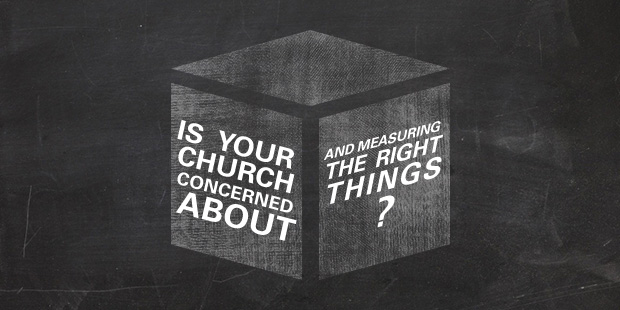
Is Your Church Concerned About and Measuring the Right Things?
Last year, Caroline Inglis was on the verge of an historic feat. No high school golfer, male or female, had ever captured the Oregon state title four consecutive years. Inglis won the class 5A state tournament her freshman, sophomore, and junior years. There seemed very little doubt that she would win the title again as a senior.
On the course, Caroline dominated the rest of the field—finishing with a 3-under 69, nine shots better than any other golfer. On the last hole, with victory assured, she scored her first bogey of the day. That would not have been an issue, except for the fact that her playing partner wrote down she had made a par. Caroline signed her scorecard and turned it in, believing she had just accomplished an Oregon first. In reality, she had just disqualified herself.
In golf, turning in an incorrect scorecard results in a disqualification. Because she had signed and submitted the wrong score, Caroline forfeited the win even though her actual score was still much better than anyone else. Having the wrong scorecard can make all the difference in the world.
Not too long ago, Bill Hybels and Willow Creek were honest enough to admit it—they had been using the wrong scorecard. An assessment demonstrated their members were not moving into maturity. “Some of the stuff that we have put millions of dollars into thinking it would really help our people grow and develop spiritually, when the data actually came back, it wasn’t helping people that much,” Hybels said. “Other things that we didn’t put that much money into and didn’t put much staff against is stuff our people are crying out for.”
While they were roundly criticized for their mistakes and everyone latched on to their remarks as a moment to say, “I told you so,” they are not the only church making similar mistakes. The things that Willow Creek found were problems in their congregation are problems in all kinds of churches. I believe most churches have been operating off the wrong scorecard for years.
Few churches use any system of accountability today. Many often judge their success based on anecdotes of temporary successes, with those frequently having long since lost any relevance to the current ministry taking place. Anecdotes can be great illustrations of statistical truths. They can also be misleading and hide the reality of the situation.
For those who actually use some means to analyze their ministry, most churches use the same three measuring sticks: bodies, budgets, and buildings. The old numbers-driven scorecard focuses exclusively on the number of people attending, the number of dollars being spent, and the number of square feet being used for church purposes. This is based on a brick-and-mortar mentality that reinforces an emphasis on the campus instead of encouraging people to be moved out into the field.
These three have served as the metrics for how the church is progressing. I’m not against those. I just don’t think they are enough. They don’t go far enough and don’t always capture the truth of the situation. Willow Creek was successful based on those standards, but an assessment showed they had missed the mark on discipleship.
Part of creating an assessment culture is being concerned about the right things. Builders don’t measure the nails to see if the lumber will fit them. They measure the lumber. No one measures a light switch and plans the construction around it. You have to measure the right things. In the church, when we spend our time only measuring the outlying issues we will miss the core mission of God.
I believe that measurements matter for the church. I don’t think we should eliminate them, but I do think we need a new scorecard. We need to key on factors that facilitate more people becoming Christ followers, more believers growing in their faith, and more churches making an impact on their communities. Our scorecards must include an emphasis on things like accountability, discipleship, and spiritual maturity.
That’s what Thom Rainer and I outlined in Transformational Church and what is at the center of the Transformational Church Assessment Tool. We need to find the right scorecard and begin evaluating and valuing the right things. Bodies and budgets may (and even should) be included, but they cannot be the only factors discussed. Find a tool, whether it is ours or not, that is valuing the right things and begin to implement a culture of assessment in your church.
In the final post of this series, I want to highlight two of the central issues that should be considered when a church sets about creating an assessment culture.
Part Three of a four-part series; read Part Four here.
Read more from Ed here.

Tags: Assessment, Ed Stetzer, New Scorecard













